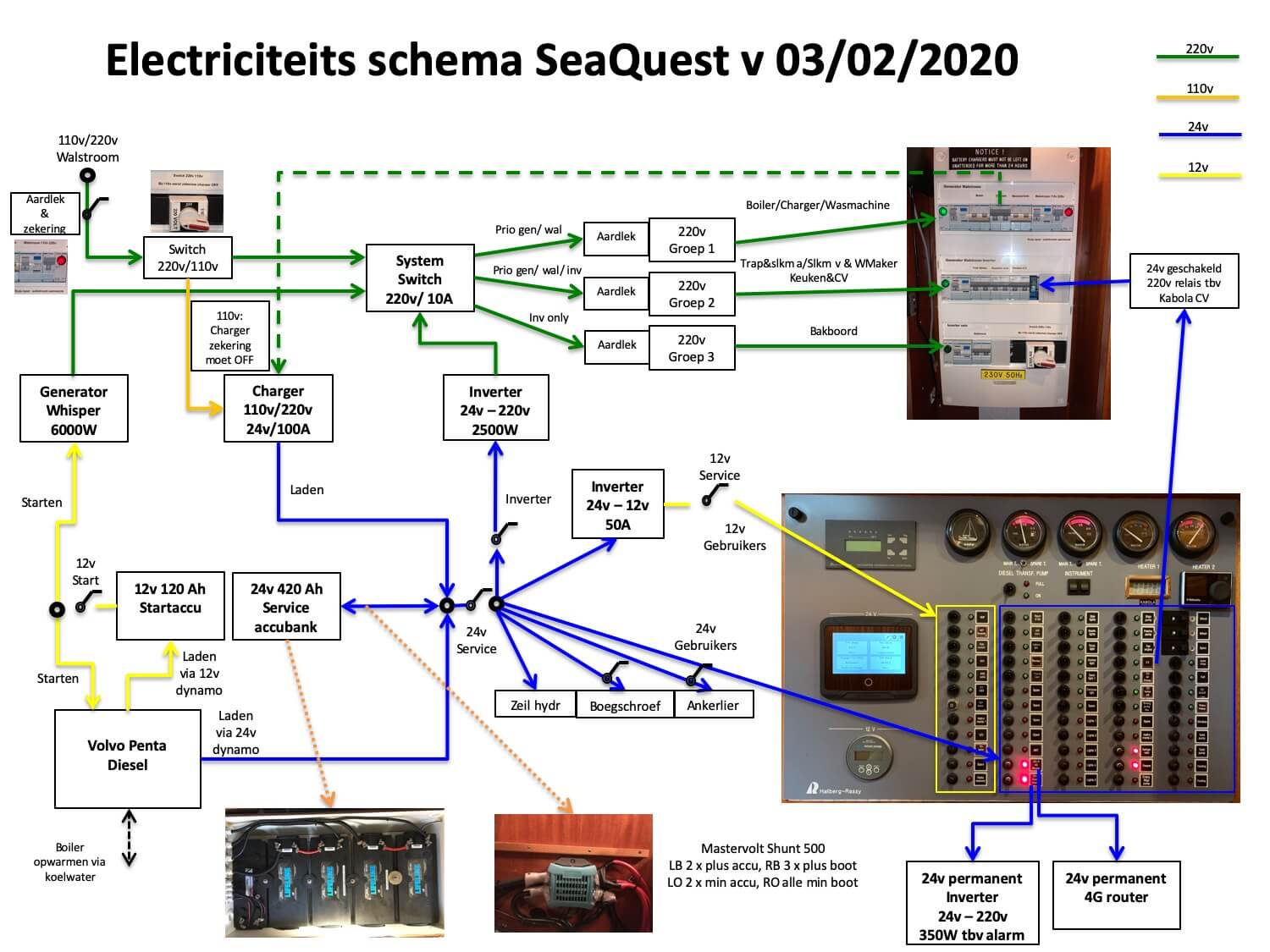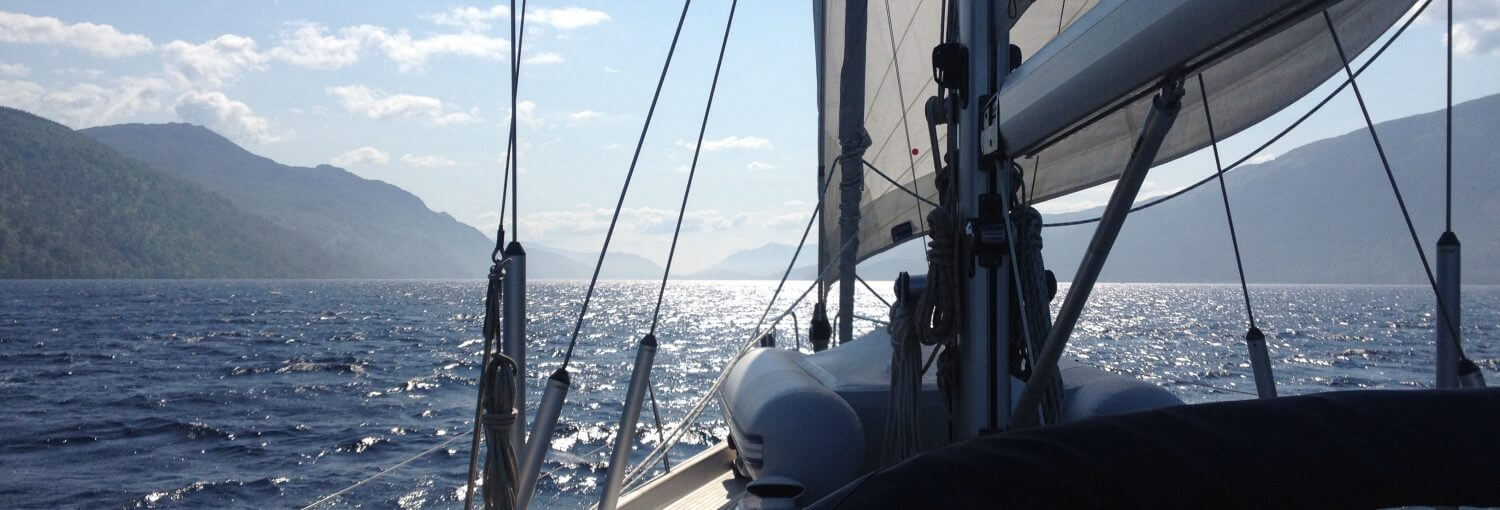Toine has made a very nice electricity scheme of the whole circuit of the boat. In recent years he has adapted and organized this circuit to his own wishes. He keeps track of every change.
The power consumers on the boat get their power from three different circuits, each with its own voltage: 220v, 24v or 12v.
The 220v circuit feeds the power sockets, the battery charger for charging the batteries, the boiler, the radiator heater, the water maker pump and the washing machine. Pictured by the green lines in the illustration below.
The 24v circuit feeds the autopilot, the navigation system, the inside and outside lights, the electric winches, the iridium-GO, the fridge and freezer, the electric toilets, various pumps, the inverter (24v -> 220v), the inverter (24v -> 12v), the bow thruster, the hydraulics for rolling the sail in and out, the anchor winch, the hot air heating, the thermal camera and the water maker boost pump. Via the 24v switch panel we can also switch on the 220v heater for the radiators. Pictured by the blue lines in the illustration below.
The 12v circuit feeds the VHF radio, the gas button (safety valve of the gas system), the short wave radio, the A67 navigation screen on the steering position, the Seatalk navigation board network and the air blowers in the heating radiators. These are the yellow lines in the picture below.

We can get power for the 220v circuit in three ways:
- Via shore power - only if we are in a port - delivers 220v directly.
- The generator - which runs on diesel - delivers 220v directly.
- Via the 24v battery bank and the inverter (which converts power from the 24v batteries to 220v).
There are three 220v electricity groups and an intelligent tool called the System Switch regulates which groups get power:
- Group 1 is used for the boiler, the battery charger and the washing machine - these are the heavier appliances - which only gets power when we are connected to shore power or when the generator is running.
- Group 2 is for the water maker pump, the heating and the sockets (except the sockets on the port side of the cabin) - which gets power when we are connected to shore power, via the generator or via the inverter (24v -> 220v).
- Group 3 is for the sockets on the port side of the cabin - these are used for sensitive devices such as the computer that have difficulty with switching the Switch - it only receives power via the inverter (24v -> 220v).
The green lights on the panel indicate which group is powered.
When we are connected to 110v shore power (is the case in the USA, Canada and Asia) only the batteries are charged. Then the switch on the panel must be set to 110v (is now standard on 220v). The 220v groups are then powered via the generator or inverter and not directly via shore power. The Systems Switch can't handle 110v (which we know from our own experience when we were in Florida 😉).
The 24v batteries can be charged in three ways:
- When the engine is running - it directly charges the 24v batteries - and also the 12v starter battery (which is only used for starting the engine and the generator).
- When the generator is running - it supplies 220v via the System Switch to group 1 which the battery charger is in.
- Through shore power - on 220v via the System Switch to the battery charger in group 1, on 110v directly to the battery charger.
When sailing for longer distances it is important to have enough diesel on board to get power via the engine or the generator, in addition to the wind for the sailing itself.
Alternatives to diesel are solar panels, a wind generator or a water generator. We had a wind generator on the Brandaan, but it delivers relatively little power (only on close reach or beam reach course), makes annoying noise, and is far out of balance for the power consumption on the SeaQuest. A water generator produces a lot more power and is interesting for us. It is on our list. Solar panels do a bit, but not enough for our total consumption and only useful in sunny places.
